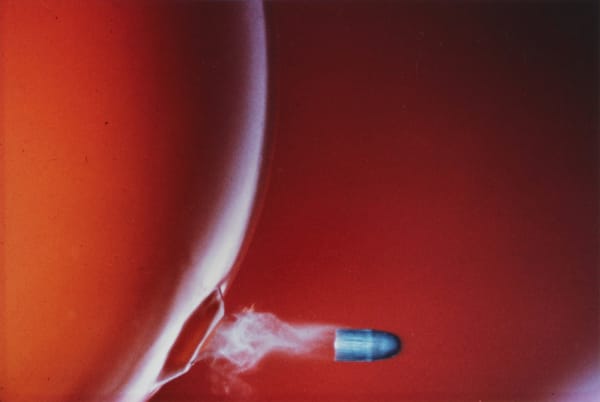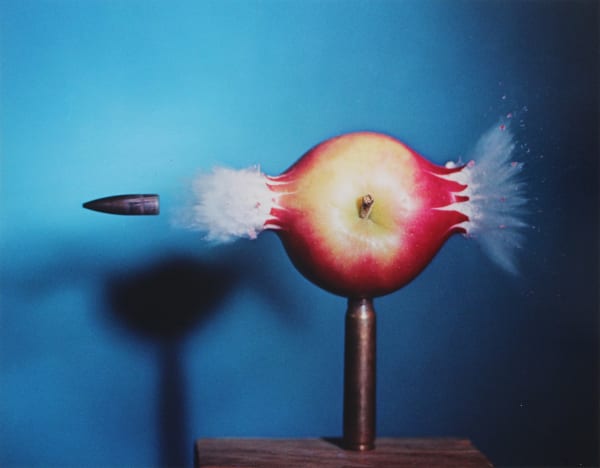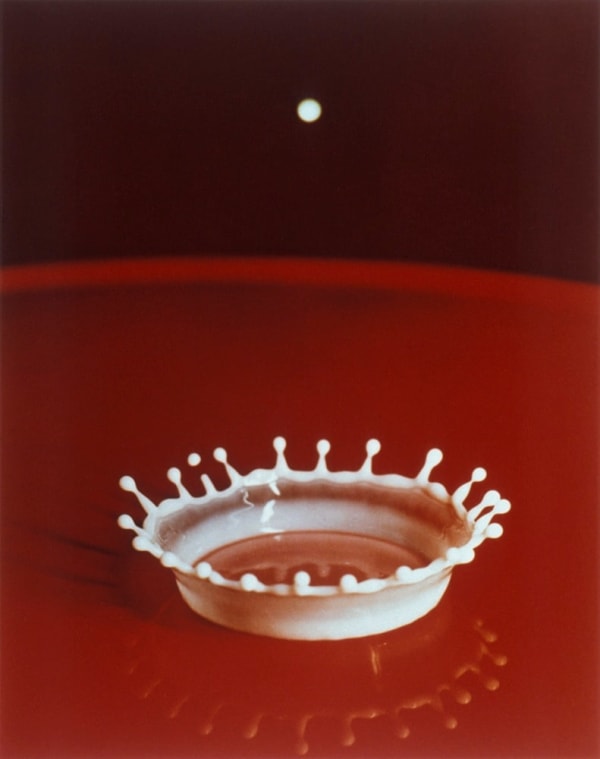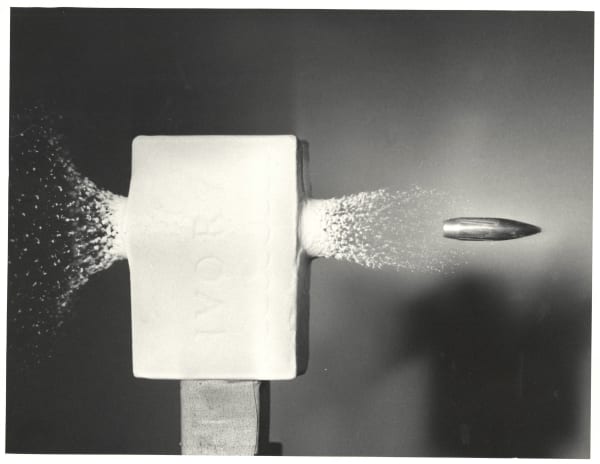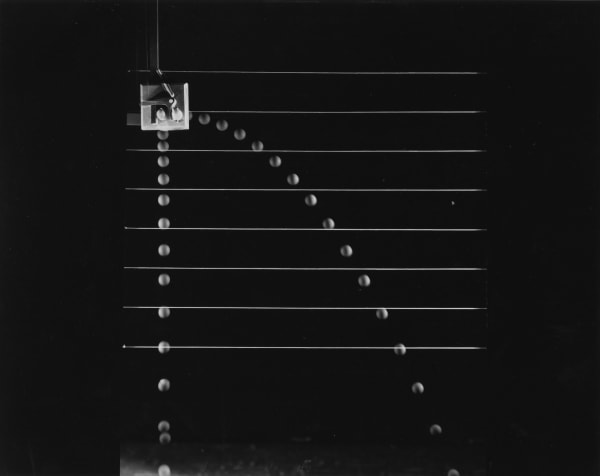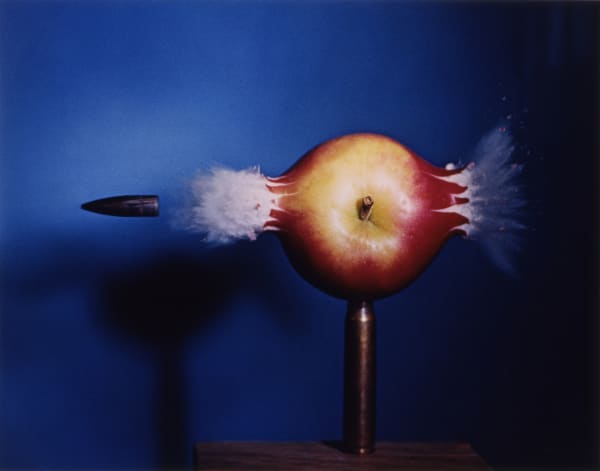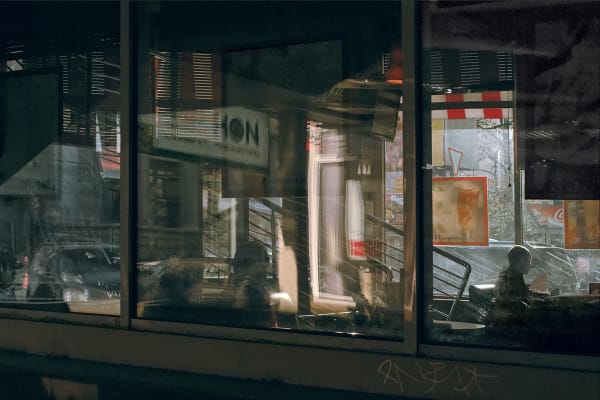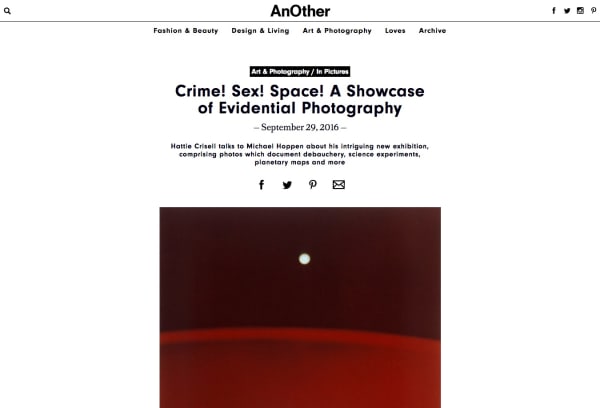Works
-
 Balloon Puncture, 1977
Balloon Puncture, 1977 -
 Bullet Through Apple, 1964
Bullet Through Apple, 1964 -
 Bullet Through Jack, 1964
Bullet Through Jack, 1964 -
 Bullet Through King, 1964
Bullet Through King, 1964 -
 Bullet Through Plexiglass, 1962
Bullet Through Plexiglass, 1962 -
 Football Kick, 1938
Football Kick, 1938 -
 Milkdrop Coronet, 1957
Milkdrop Coronet, 1957 -
 Best & HEE, MGM Academy Award Quicker ‘n a Wink, 1940
Best & HEE, MGM Academy Award Quicker ‘n a Wink, 1940 -
 30 cal Bullets and Light Bulbs, 1936
30 cal Bullets and Light Bulbs, 1936 -
 Bullet through bar of soap
Bullet through bar of soap -
 Bullet through Helium Bubble, 1980
Bullet through Helium Bubble, 1980 -
 Bullet through Standing Copper Wire, 1955/1956
Bullet through Standing Copper Wire, 1955/1956 -
 Cavitation Study, 1940
Cavitation Study, 1940 -
 Fire Cracker, 1975
Fire Cracker, 1975 -
 Firing a Mauser Automatic Pistol, 1938
Firing a Mauser Automatic Pistol, 1938 -
 Gussie Moran, 1949
Gussie Moran, 1949 -
 Pelton water wheel, 1939
Pelton water wheel, 1939 -
 Ping Pong Ball Floating, 1977
Ping Pong Ball Floating, 1977 -
 Water Drop into Water Photogram, 1986
Water Drop into Water Photogram, 1986 -
 Ball Launch
Ball Launch
Biography
Photography has illuminated so many areas of the 20th century, but none more so than the remarkable work by one of photography's true pioneers: Dr Harold Edgerton. As the inventor of the strobe flash in the early 1930s, the 'Doc.' as he was affectionately known, stopped time in its tracks. For the first time we were able to see the wonderful arc of the golf swing, or the innate beauty of the 'crown' as a droplet hits a pool of milk.
Born in Fremont, Nebraska, the Doc was raised in Aurora, Colorado. Enrolling at the Massachusetts Institute of Technology in 1926, it was during his time as a professor at MIT, some years later, that he invented the electronic flash and decided to devote his career to recording what the unaided eye cannot see. Edgerton's influence is still felt today, as we still use his invention in contemporary flash cameras, although their size over time has somewhat changed. Many journalists, photographers, scientists, inventors, industrialists and naturalists have all paid tribute to him for altering the way we look at the world and for controlling and explaining its unseen happenings. In 1986, the Spencer Museum of Art in Kansas curated an exhibition of Edgerton's work exhibited alongside that of Leonardo da Vinci.
In one particular image, the famous golfer Densmore Shute, well-known for the style and grace of his strokes, swings his driver into an Archimedean spiral - photographed at 100 flashes per second for half a second. His torso dissolves into a ghostly shape, superimposed on itself 50 times by the flashing strobe. Note the curving of the shaft after the ball is hit.
Exhibitions
-

Paris Photo 2022
Grand Palais Éphémère • Stand D27 10 - 13 Nov 2022For this year’s edition of Paris Photo, the Michael Hoppen Gallery has curated an exhibition of exquisite, unique works. The term ‘unique’ has become ubiquitous, but we use it here...Read more -

Art Genève 2022
Palexpo • Stand B47 3 - 6 Mar 2022After a delayed start to the 10th edition of Art Genève, Michael Hoppen Gallery is delighted to present a selection of our represented artists who challenge traditional boundaries and our...Read more -

ART GENÈVE 2020
Palexpo • Stand B49 29 Jan - 2 Feb 2020Michael Hoppen Gallery will be presenting some of our most iconic and important artists for our third engagement at Art Genève . We believe that photography has changed dramatically over...Read more -

ART GENÈVE 2019
Palexpo • BOOTH B39 31 Jan - 3 Feb 2019A preview of what Michael Hoppen Gallery will be taking toArt Geneva, SwitzerlandRead more -

? The image as question
28 Sep - 26 Nov 2016'? The image as question: An exhibition of evidential photography' is a large group show at Michael Hoppen Gallery.Read more -

Dr. Harold Edgerton
Abstractions 6 Jun - 2 Aug 2014A scientific approach to photography. Pioneering photography as art.Read more
News
-

Paris Photo 2022
Michael Hoppen's Highlights November 1, 2022Michael Hoppen Gallery is delighted to share a preview of our Paris Photo presentation. The fair opens at the Grand Palais Éphémère in the grounds...Read more -

Harold Edgerton: Seeing the UNseen
Published by Steidl with MIT Museum January 12, 2021Seeing the Unseen contains iconic photos from the beloved milk drops and bullets slicing through fruit and cards, to less well known but equally compelling...Read more -

Revelations
Experiments in Photography March 31, 2015The science of photographic artRead more
Press
-

The Image as Question: An Exhibition of Evidential Photography
Will Britten, Film's Not Dead, November 9, 2016 -

Crime! Sex! Space! A Showcase of Evidential Photography
Hattie Crisell, AnOther Magazine, September 29, 2016 -

Dr Flash
George Upton, Avaunt Magazine, July 14, 2016 -

Harold Edgerton: The Man Who Froze Time
Stephen Dowling, BBC, July 23, 2014 -

Dr. Strobe: the man who stopped time and electrified photography - in pictures
Mee-Lai Stone, The Guardian, June 12, 2014 -

Dr. Harold Edgerton, Michael Hoppen Gallery, London
Aesthetica Magazine, June 2, 2014 -

Nebraskan-born engineer Dr Harold Edgerton photographed motion that was too fast to be captured with tradition
Gillian Orr, Independent, May 31, 2014
Enquire
